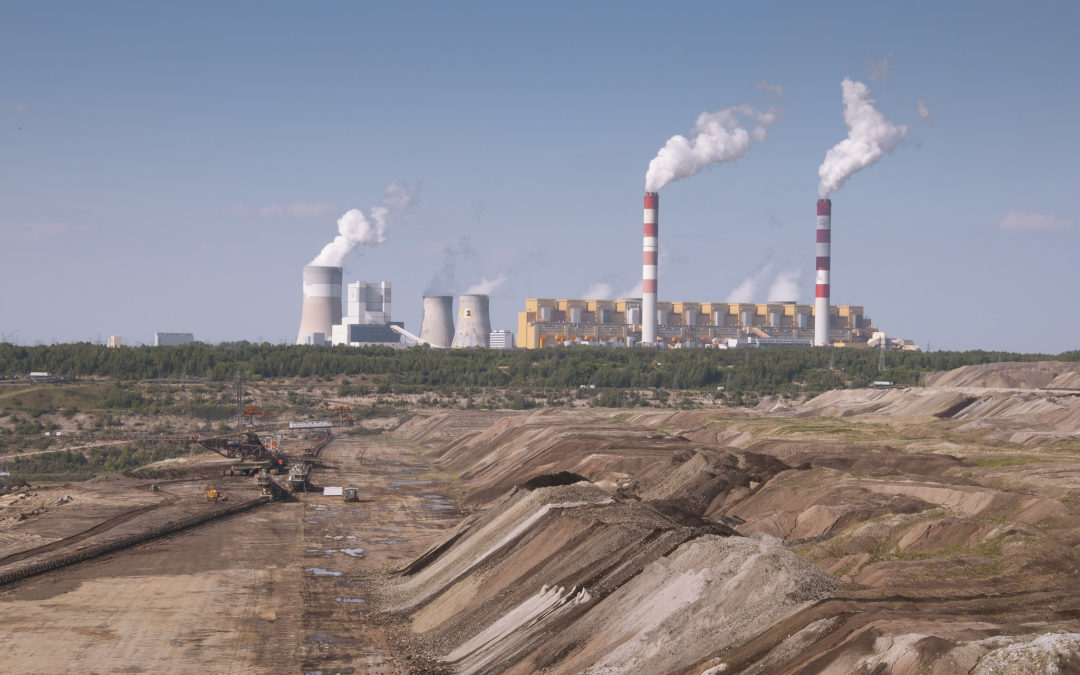By Karolina Baca-Pogorzelska
Ostrołęka C, which was intended to be Poland’s last newly built coal-fired power station, has already cost state-controlled firms almost 1 billion zloty. Yet it may never be built, despite its owners already having signed a contract for the non-existent plant to supply electricity. Even if construction is somehow completed, all estimates indicate that it will never pay for itself.
The project to build Ostrołęka C, a coal-fired power station producing 1,000 MW of power, has long been mired in difficulties. The plant was initially due to open in 2015 or 2016, but in 2012 state-owned Energa decided to freeze the project.
The company declared that there were insufficient funds to complete the project and that an investor was needed. It also argued that moving ahead made little sense in the context of climate policy – especially as four other coal-fired plants were being implemented or planned (three of which are already in operation, with a combined capacity of 2,875 MW, and another due to open this year, adding a further 910 MW).
But before the decision to freeze the project was taken, preparations for constructing the power station had already begun. Almost 200 million zloty had been spent on the investment, with tens of thousands of hectares of forest felled and new roads built.
New government, new opening
The project was, however, taken out of the freezer following the Law and Justice (PiS) party’s victory in the 2015 parliamentary elections. A Ministry of Energy was created, headed by Krzysztof Tchórzewski, the party’s leading representative in the electoral constituency that includes the city of Ostrołęka.
Ostrołęka C became Tchórzewski’s pet project. A “volunteer” to support Energa was soon found – the Poznań-based Enea, also a state-controlled company. American giant GE won the tender for carrying out the investment, committing to building 1,000 MW of coal power for 6.02 billion zloty. The problem is that so far it has not managed to raise this money. Every report on the plant made it clear that any investment would never be returned, so willing partners were hard to find.
Further help was, though, forthcoming from Tchórzewski. He succeeded in obtaining a notification from Brussels effectively giving the green light for state support for coal projects. This took the form of the capacity market bill, which allows state funds to be paid to electric energy producers not only for the generation itself, but for readiness at peak electricity need – de facto, then, for building new capacity.
This law meant that Ostrołęka C could participate in the capacity market auction for 2023, which was when it was due to begin operation according to the new timetable. In late 2018, Energa announced that it had signed a contract for 15 years for a total of 853 MW capacity for the as-yet non-existent plant, meaning annual state support of around 170 million zloty. In other words, 2.7 billion zloty over 15 years. But this is still not enough for the investment budget to add up.
As a result, in early 2019, PGE, Poland’s biggest energy player (also controlled by the state), announced that it was beginning talks on participation in the construction of Ostrołęka C. The bizarre situation now was that one coal-fired power station was to be built by three of the four state energy companies, two of which – PGE and Enea – are also involved in the other recent coal plants mentioned above.
But in late November, following the parliamentary election, PGE declared that it would actually not be participating after all. After the same election, Tchórzewski – who a year earlier had dug his spade into the ground to symbolically commence the building of the Ostrołęka C – ceased to be minister (and in fact his ministry was scrapped completely).
“If I had to bet on it now, I don’t think the power station will be built,” Grzegorz Tobiszowski, a PiS MP and previously the deputy energy minister, said in late November 2019. Shortly afterwards, the website Biznesalert.pl reported that a political decision had been taken that Ostrołęka C would indeed not be built after all.
Billions in costs for billions in losses
When Dziennik Gazeta Prawna, a leading Polish daily, wrote in January 2019 that Ostrołęka C could end up costing more 8 billion zloty (2 billion more than initially planned), and that Chinese investors could become involved, all parties denied it.
In December, however, development minister Jadwiga Emilewicz admitted that the cost of the plant would indeed not be the original 6 billion zloty, and could amount to 8 or 9 billion. As for China, Enea, with a 50% share in Ostrołęka C, did not rule out looking for investors outside Europe.
Emilewicz said that a final decision on the project’s future would come within six months. The government is seriously considering the possibility of redesigning the plant, to be powered with gas instead of coal.
Considering the location of Ostrołęka, however, this would make fuel deliveries difficult. At present, the coal for the new plant is contracted from Silesia, from Polska Grupa Górnicza, of which Energa and Enea are shareholders. If gas were to be used, a pipe connecting the power station with the Yamal-Europe pipeline would probably be required.
The project has already consumed 890 million zloty. Unfortunately, though, this is not all the money that the investors – state-controlled companies – stand to lose.
According to the capacity market law, a power agreement is dissolved if it concerned a new or modernised unit of the generation capacity market and the power supplier did not satisfy the so-called financial milestone and then the operational milestone. These are complicated commitments which a power supplier is obliged to fulfil, for instance by documenting actions required under the law by specified, rigid dates.
In the case of Ostrołęka C, we are now at the first stage, the financial one. The president of the Energy Regulatory Office announced the final results of the capacity market auction on 14 January 2019, from which point the relevant documentation must be completed within 12 months. The legal timetable therefore gives the power supplier until 14 January this year to submit the required documents for Ostrołęka.
Failure to meet these conditions means that the power contract between Energa and the industrial system operator – the state-owned Polish Electroenergy Networks – will be dissolved. This would result in the owners of the planned plant forfeiting their indemnity. For Ostrołęka C, this would be 43 zloty/kW, amounting to 36.6 million zloty.
But if the owner does meet the financial milestone and continues to build, but does not complete the project on time, from January 2023 it will begin paying fines. It can then continue doing so for a maximum of three years, because failure to complete the investment – meaning failure to present documentation confirming completion of the operational milestone – will result in dissolution of the contract at the end of 2025.
The monthly penalty would be 202.99/zloty/kW/year, meaning 14.4 million zloty monthly in the case of Ostrołęka C. Over the maximum period of three years, this would total in excess of 554 million zloty including indemnity.
Taking into account the 890 million zloty already spent and the potential compensation for the constructor, even a non-existent Ostrołęka C will have lasting repercussions.
Translation: Ben Koschalka
Main image credit: b3tarev3/Flickr (under public domain)





















